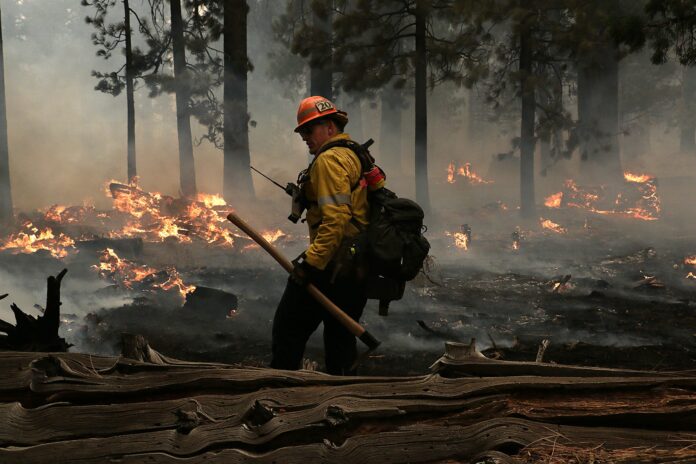
Recording-breaking droughts, excessive heat warnings, monsoon storms and other effects of climate change continue to affect the western United States. Both Reno and Las Vegas are currently ranked as some of the fastest warming cities in the United States.
States at Risk has ranked Reno as the nation’s fastest warming city in 2019. The city has seen an increase of 1.39 Fahrenheit per decade with Las Vegas falling not too far behind in ranking.
According to researchers at Climate Central, Reno is 6.2 degrees warmer this decade than it was in the 1970s. With weather events like snow storms and summer fires becoming more common, more vulnerable populations in Reno and Las Vegas will be put at a higher risk.
The Caldor fire was no exception to the year’s extreme weather events. The Caldor fire started on Aug. 30 and has since been ranked as California’s second deadliest wildfire. On Sept. 5, the fire lurched over Sierra Nevada and headed towards Lake Tahoe, the second deepest lake in the U.S. It’s depth could fit the Statue of Liberty vertically.
“In an increasingly global society, the effects of climate change are substantial,” Zach Billot, UNLV student climate activist, said. “The longer human induced climate change is allowed to ravage, the more people will be affected by climate disasters that are geographically distant.”
The Caldor fire is just one example for Billot of how a climate disaster was exacerbated by humans. It not only damages land and wildlife, but also threatens the health of thousands with the worst air quality in the country at this time, he believes.
Unhealthy air quality levels and poor breathing conditions resulted in mass evacuations being issued for the South Lake Tahoe area, an event that has not occurred there in years. For week’s over the summer, several fires besides the Caldor fire have sent smoke over to Reno to settle there which has posed threats for vulnerable populations, sensitive ecosystems and contributed to the warming effect of the city as a whole.
“After 18 years living in Reno, the effects of climate change are extremely apparent and we notice it during all seasons,” Katie Gilbertson, UNLV junior and Reno Native, said. “Growing up we had winters where the snow would pile up so much that we had to make tunnels. Now we are lucky if we get a few inches.”
While many argue that extreme weather in the state is a byproduct of climate change, UNLV professor Kristen Averyt said it’s not all due to climate change and that “between 50 to 75 percent of the warming may be tied to the urban heat island effect.”
In a fact sheet published by UNLV’s Brookings Mountain West & The Lincy Institute, policy researchers investigate what “urban heat islands” are, their effects, the correlation between heat and income and factors that contribute to rising temperatures in Las Vegas, North Las Vegas, Henderson and Reno.
With record breaking heat waves and severe weather abnormalities, Averty says that planting more greenery around urban areas and utilizing lighter-colored building materials that absorb less heat could cool things off somewhat in the coming years to help decrease Las Vegas and Reno’s warming rates.

More city vegetation reduces heat island effects by absorbing heat and releasing moisture into the air. This undoes the negative work that thermal masses like skyscrapers produce. They store tons of heat during the day and slowly release it overnight.